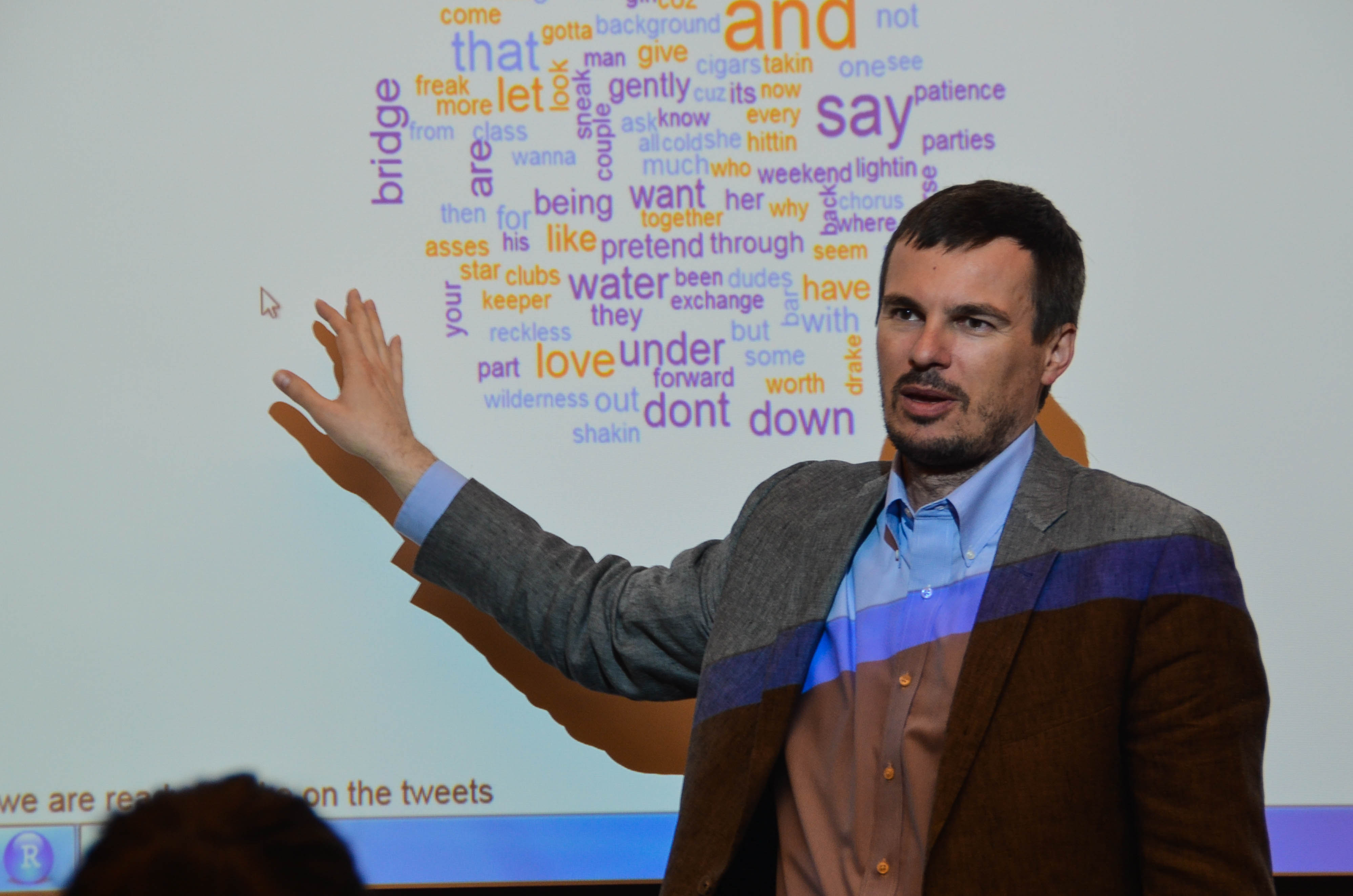
Jeremy Auerbach, Staff Photographer
The first of a series of workshops on basic but creative coding was held on Wednesday, Feb. 3, hosted by Visiting Assistant Professor of Quantitative Analysis Pavel Oleinikov from the University’s Quantitative Analysis Center (QAC) and Sara Eismont ’18. The workshop focused on teaching students how to create visual representations of their most-used words on Twitter.
Eismont, a prospective Sociology major and Data Analysis minor, remembers taking a QAC class for the first time on a whim, having considered coding somewhat intimidating in the past.
“I think there are a lot of people who are intimidated about going into the QAC and taking a class…but there’s a lot of really cool, simple things that you can do,” Eismont said. “So [Professor Oleinikov] and I talked about creating these workshops…[as] an hour-and-a-half, one-time thing, where someone could…pop in and learn one skill…and maybe that [would] spark their interest in getting involved.”
These workshops are meant to make the QAC more accessible to the greater University community as well.
Oleinikov spoke to his rationale for creating these workshops at the University.
“We do this in the course I teach, QAC 211, but not everybody can get in,” Oleinikov explained. “So, when Sara brought it up, I thought it would be a nice opportunity to offer it to the students who didn’t take the course but [are] interested in it. We want to get more students interested in what we do. Surprisingly, we still learn that some students are not aware of the QAC, so this [could] increase the visibility.”
Drawing from her own experience, Eismont added to that sentiment, remembering her surprise when she became interested in the department. She expressed her desire to make this possible for other members of the University who may be apprehensive about stepping out of their comfort zones.
“I think that there are people who take one QAC class and then there are people that major in it,” Eismont said. “There’s not a lot of interaction with the general Wesleyan community. I never liked coding, and then I was like…coding’s fun.”
Students were asked to bring a laptop and their personal Twitter information. Oleinikov then began walking the classroom through the steps necessary to create “word clouds” featuring words from their Twitter accounts, with the most frequently used appearing as the biggest. He gave two examples, using the lyrics from a song by Drake and “Water Under the Bridge” by Adele to produce two separate clouds made up of words of different sizes that were arranged to fit together.
This task is actually one that Eismont decided to take on for her final project in QAC 201: “Applied Data Analysis”, last semester. As a transfer student from Smith College, she thought it would be interesting to compare the Twitter accounts of the two schools that she has attended. By creating word clouds, which can be composed from a pool of up to 3,000 tweets, she was able to draw conclusions about what kinds of things the two schools emphasized online.
There was an enthusiastic response from Eismont’s fellow students, as they began asking to have their own Twitter accounts analyzed for common words after having learned about her project.
“It’s something that people think is really interesting,” said Eismont. “There are apps on Facebook that show you which words you use the most often, but I think it’s really cool to be able to code that yourself and figure it out. It makes you say, ‘wow, what does that say about me?’”
Jacob Sussman ’17, a Film Studies major, saw the workshop as a good way for students to gain exposure to topics and skills that may be outside of their specific fields of study.
“I’m just generally interested in tech and design stuff,” Sussman said. “I know that data visualization can be really artistic, so I thought this would be a cool way to learn more.”
Oleinikov echoed this fact, noting that there is a lot of diversity in the group of students that can be attracted to the QAC.
“A lot of our [QAC] students come from the humanities and…the social sciences and were not exposed to programming before,” Oleinikov said. “For them, QAC often becomes the first class and place where they learn about data analysis, which they can later [decide to] take on.”
Eismont and Oleinikov plan to keep these workshops going, hoping to hold at least a few more over the course of the semester. In the meantime, they are interested in thinking of ways to attract more students. Possible future steps will be to create an online forum to gauge what kinds of topics and projects students would be interested in taking on in the future. The main objective is to prioritize student interests as much as possible.